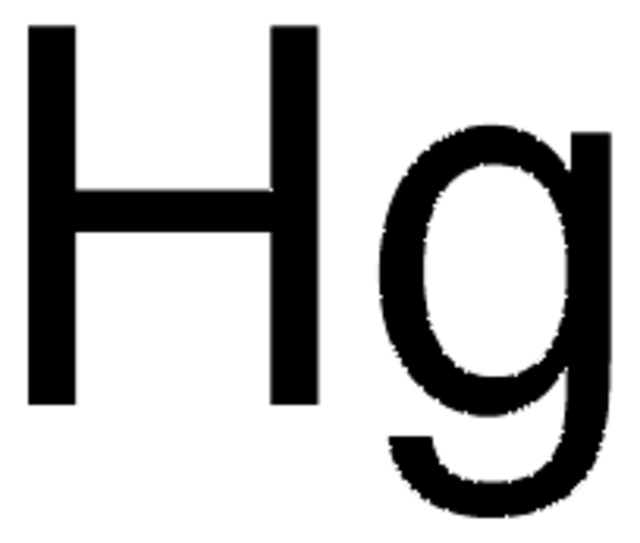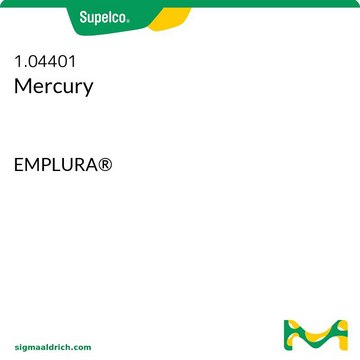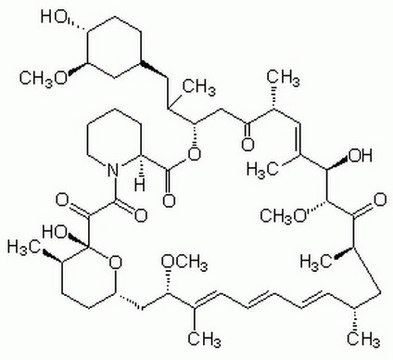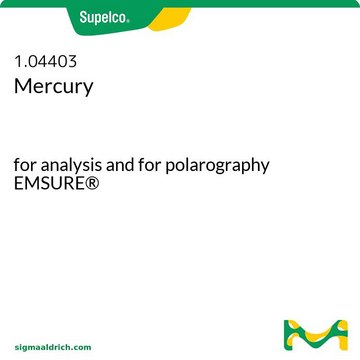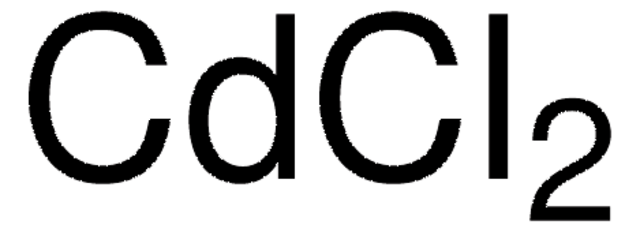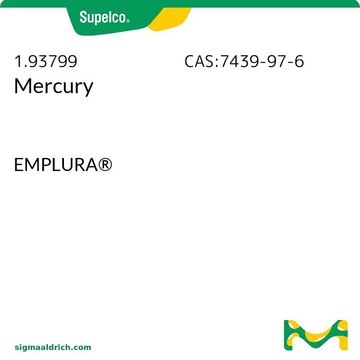About This Item
Recommended Products
vapor density
7 (vs air)
vapor pressure
<0.01 mmHg ( 20 °C)
1 mmHg ( 126 °C)
Assay
≥99.99% trace metals basis
form
liquid
resistivity
95.8 μΩ-cm, 20°C
bp
356.6 °C (lit.)
356.6 °C
mp
−38.87 °C (lit.)
SMILES string
[Hg]
InChI
1S/Hg
InChI key
QSHDDOUJBYECFT-UHFFFAOYSA-N
Looking for similar products? Visit Product Comparison Guide
General description
Signal Word
Danger
Hazard Statements
Precautionary Statements
Hazard Classifications
Acute Tox. 2 Inhalation - Aquatic Acute 1 - Aquatic Chronic 1 - Repr. 1B - STOT RE 1
Storage Class Code
6.1A - Combustible acute toxic Cat. 1 and 2 / very toxic hazardous materials
WGK
WGK 3
Flash Point(F)
Not applicable
Flash Point(C)
Not applicable
Regulatory Information
Choose from one of the most recent versions:
Already Own This Product?
Find documentation for the products that you have recently purchased in the Document Library.
Which document(s) contains shelf-life or expiration date information for a given product?
If available for a given product, the recommended re-test date or the expiration date can be found on the Certificate of Analysis.
How do I get lot-specific information or a Certificate of Analysis?
The lot specific COA document can be found by entering the lot number above under the "Documents" section.
How do I find price and availability?
There are several ways to find pricing and availability for our products. Once you log onto our website, you will find the price and availability displayed on the product detail page. You can contact any of our Customer Sales and Service offices to receive a quote. USA customers: 1-800-325-3010 or view local office numbers.
What is the Department of Transportation shipping information for this product?
Transportation information can be found in Section 14 of the product's (M)SDS.To access the shipping information for this material, use the link on the product detail page for the product.
I see that Mercury is sold by weight, but it's a liquid. What is the volume?
The specific gravity of liquid mercury at 20°C is 13.546, according to the CRC Handbook of Chemistry and Physics, 82nd ed. (2001-2002), page 4-19. We list several mercury products, in various package sizes, sold by weight. Here are the conversions from mass to volume: 5G = 0.37 mL. 50G = 3.7 mL. 100G = 7.4 mL. 250G = 18.5 mL. 500G = 36.9 mL. 2KG = 147.6 mL.
My question is not addressed here, how can I contact Technical Service for assistance?
Ask a Scientist here.
Our team of scientists has experience in all areas of research including Life Science, Material Science, Chemical Synthesis, Chromatography, Analytical and many others.
Contact Technical Service
